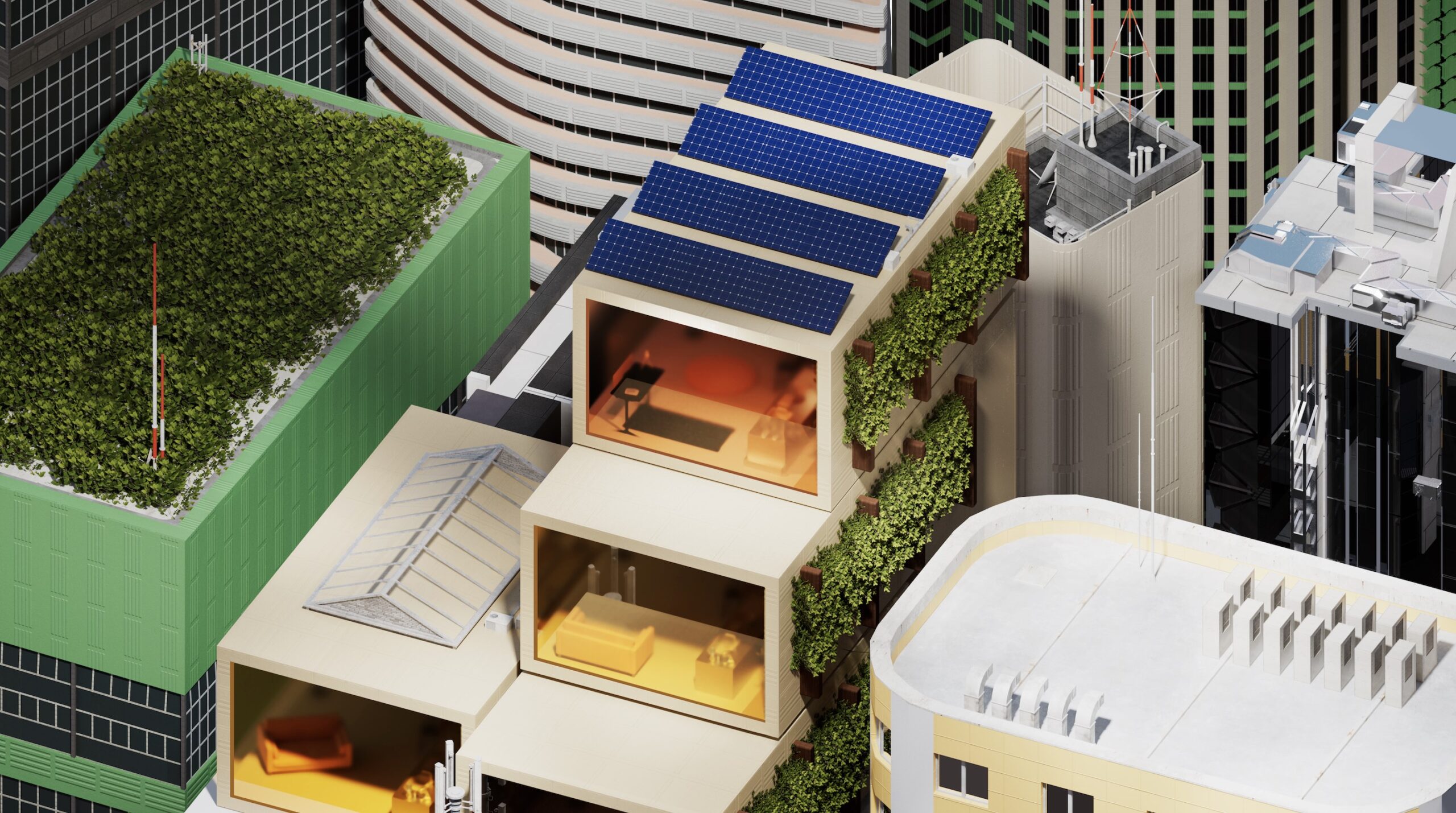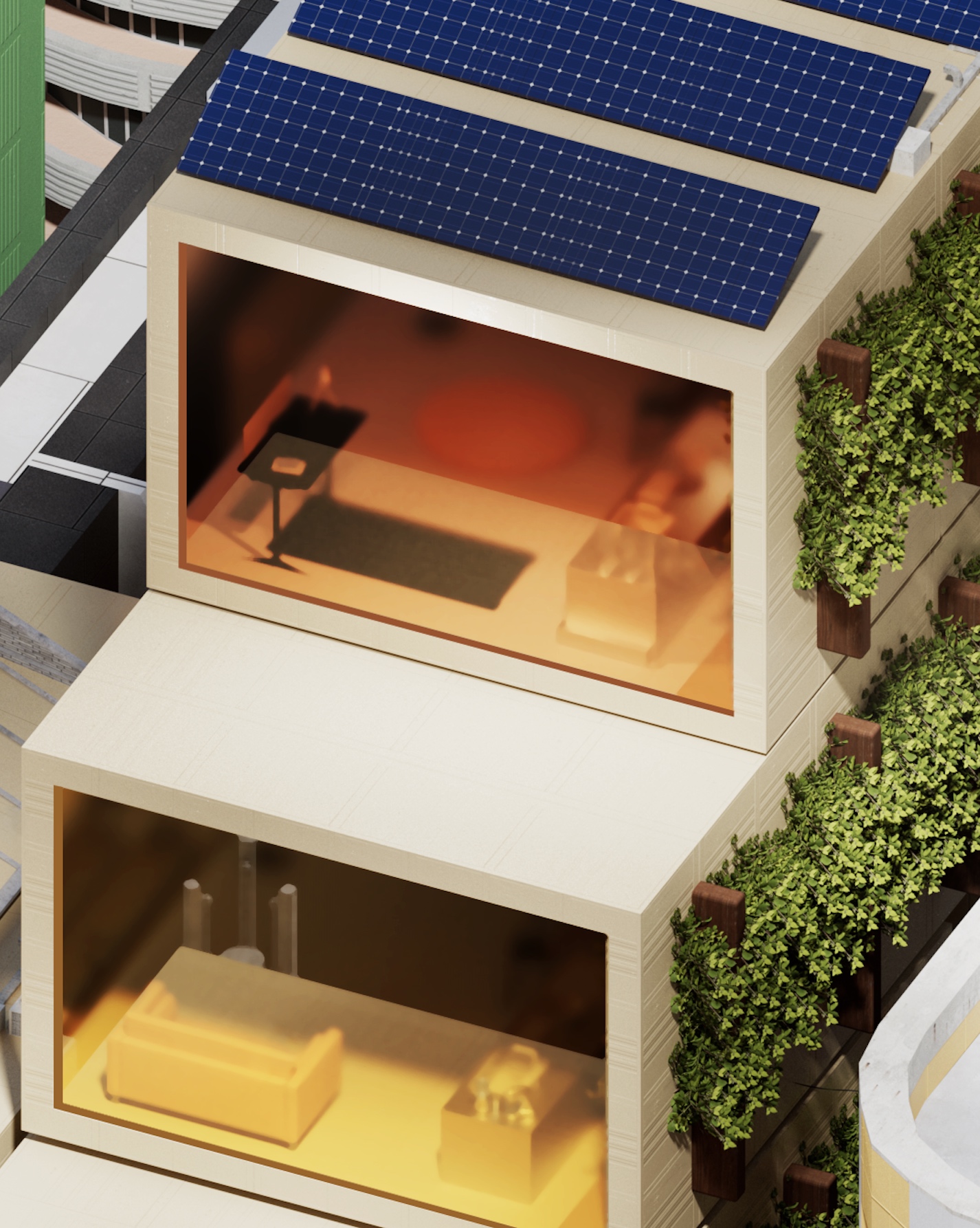Architecture will shape our future: How can we design and build homes that are better for people and the planet? Helen Job, head of research at SPACE10, shares what the regenerative home of tomorrow could look like
 Photography by Lucy Hardcastle for SPACE10 featuring The Regenerative Home, Collective
Photography by Lucy Hardcastle for SPACE10 featuring The Regenerative Home, Collective
Throughout history, our homes have been places of sanctuary, safety, and care for us and our kinfolk. Living in London — my home — I find these elements not only in the four walls I share with my daughters, but my local neighbourhood, Hackney, where care manifests as acts of maintenance we undertake as neighbours, or sanctuary found in local parks and squares.
The home is also central to our work at SPACE10, an independent research and design lab dedicated to IKEA. Underpinning our work are three goals: to create regenerative, inclusive and healthy homes for all.
Focused on creating a better everyday life for people and the planet, we are compelled to investigate current and speculative responses to the pressing issues impacting us and how we live, from climate, political and technological shifts to health, identity, and community.
We do this through our own experiments, through our work with inspiring partners, and through energetic debate with our informed community. Together, we envision and design solutions that are better for the many. But when it comes to the home, what do we mean by the many?
 Photography by Lucy Hardcastle for SPACE10 featuring The Regenerative Home, Microbiome
Photography by Lucy Hardcastle for SPACE10 featuring The Regenerative Home, Microbiome
At a time when biodiversity and planetary health are in jeopardy, tomorrow’s homes must replenish and restore all species — not just human residents. By exploring more equitable and symbiotic ways of living, we created The Regenerative Home. This report and ongoing piece of research suggest that by working collectively, we can design dwellings that give back, and produce more than they consume.
By centring regeneration in the home — a space we engage with on a daily basis, which represents stability, security and comfort for the most fortunate — we can begin to break down the myths associated with regeneration and show how everyone has a stake in its future.
To start, we must acknowledge our place as inherently ecological beings. Rather than seeing ourselves as outside of the environmental conversation we must move inside. In the report, we speak with Mawuena Tendar and Lara Pagnier, co-founders of Standard Deviation, who note: ‘Instead of degenerating our ecosystems, we as humans can support nature’s capacity to regenerate. That’s our role to play.’
Of course, we are well aware that regeneration is more an aspiration than an actual current possibility for certain areas within the home but that doesn’t mean we shouldn’t be pushing towards it.
To make this process more tangible, we spotlight case studies from around the world that show how regeneration can be built into our future homes. In Slovakia, EcoCocon uses modular panels made from 89% straw to create buildings that can last decades before being returned safely to nature.
 Photography by Lucy Hardcastle for SPACE10 featuring The Regenerative Home, Traveller
Photography by Lucy Hardcastle for SPACE10 featuring The Regenerative Home, Traveller
Created in Taiwan, Biovessel is an indoor system that uses soil and earthworms to break down household food scraps for compost with no power, technology or odour. Elsewhere, SOIL is working to provide Haitians with ecological sanitation systems — and jobs — that give people access to safe toilets while reviving the country’s soil.
We also share 10 opportunities that we as humans, neighbours, housebuilders, and developers can explore towards more regenerative living. For instance, restoring and upgrading buildings to prolong their life, enhance energy efficiency, and create and uplift local communities.
We consider reusing old building materials, furniture, and components to save costs, reduce demolition waste, and demand for new materials. Elsewhere, we explore building naturally by using locally-sourced natural materials such as straw and clay for new building work and insulation — abundant materials that can be safely returned to nature.
Other opportunities include integrating solar, green hydrogen, and other renewable energy systems into the exterior and interior design of the home to capture and provide off-grid power.
Plus, redirecting thermal heat from sources such as data centres and city sewer systems can power local buildings, reduce reliance on fossil fuels, and boost local grids. There are compost kitchens too and composting food scraps from home-grown produce using countertop wormeries.
 Photography by Lucy Hardcastle for SPACE10 featuring The Regenerative Home, Collective
Photography by Lucy Hardcastle for SPACE10 featuring The Regenerative Home, Collective
Another way we explore regenerative living is by redesigning sanitary systems, so residents can turn human waste into fertiliser for plants and gardens, and support biodiversity. And there’s also place-based production – from furniture to food, local sourcing of the items that make your home can create jobs, preserve skills, and inspire regenerative business models.
Finally, we look into sharing household objects through joint ownership, as-a-service models, or community libraries to extend their life and use, and promote recycling. Plus, we also examine how to create neighbourhood data networks to actively encourage regenerative behaviours that respond to environmental shifts, and the availability of resources and energy.
We’d love to hear what people are doing in this space by sharing their own efforts with us via our social channels. In the coming months, we will share insights, case studies, and opportunities from the report to build a dialogue with people around the world to understand how we can all live more regenerative and restorative lives at home.
For more information, visit space10.com
Get a curated collection of design and architecture news in your inbox by signing up to our ICON Weekly newsletter

















